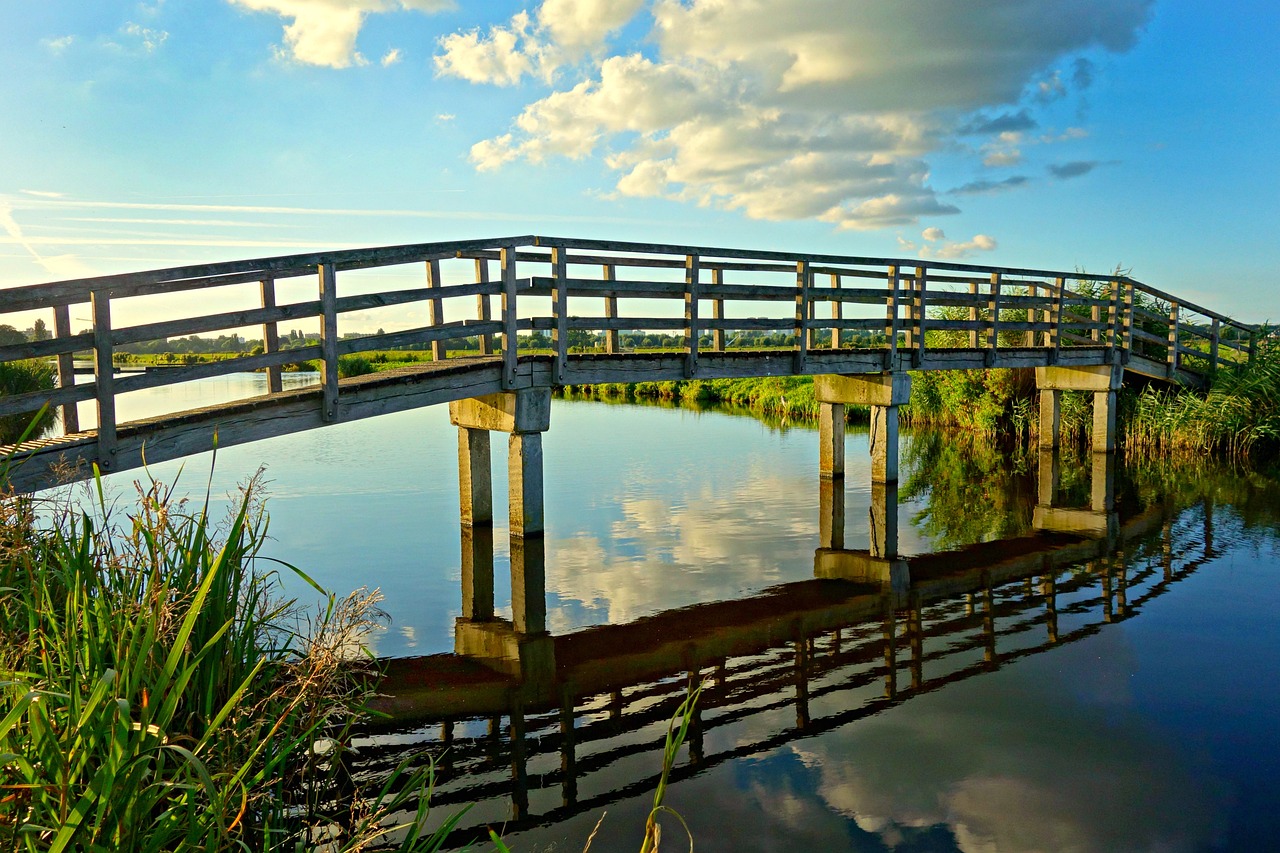Table of Contents
![]()
Introduction
Man-made structures have been a testament to human creativity, ingenuity, and aesthetic appreciation throughout history. From ancient monuments to modern skyscrapers, these structures embody the artistic vision and cultural significance of their times. The beauty of architecture often reflects a combination of design principles, materials, and the cultural context in which they were built. This article explores some of the most beautiful man-made structures around the world, examining their historical significance, architectural elements, and the factors that contribute to their enduring allure.
Historical Context
Evolution of Architectural Styles
Architecture has evolved dramatically over the centuries, influenced by technological advancements, cultural shifts, and artistic movements.
- Ancient Civilizations: Early structures like the pyramids of Egypt and the temples of Greece showcased the importance of monumental architecture in religious and political contexts.
- Medieval Architecture: This period saw the rise of grand cathedrals, characterized by their soaring spires and intricate stained glass, exemplified by structures such as Notre-Dame de Paris.
- Renaissance and Baroque Influences: The Renaissance brought a renewed interest in classical aesthetics, while Baroque architecture introduced dramatic, ornate designs that emphasized grandeur.
- Modern and Contemporary Architecture: The 20th century witnessed the rise of modernism, focusing on functionality and simplicity, while contemporary architecture has embraced innovative designs and sustainable practices.
Cultural Significance of Structures Over Time
Throughout history, the structures we build reflect our values, beliefs, and societal aspirations. They serve as landmarks that connect us to our past and inspire future generations.
Categories of Beautiful Man-Made Structures
Religious Structures
Sagrada Familia, Barcelona, Spain
Designed by Antoni Gaudí, the Sagrada Familia is an iconic basilica known for its unique architectural style that combines Gothic and Art Nouveau elements. Its intricate facades and towering spires make it a masterpiece of religious architecture, representing the devotion and creativity of its creator.
St. Basil’s Cathedral, Moscow, Russia
With its colorful onion domes and intricate details, St. Basil’s Cathedral stands as a symbol of Russia’s rich cultural heritage. Completed in the 16th century, it combines elements of Byzantine and Russian architecture, creating a visually stunning landmark.
Taj Mahal, Agra, India
Often referred to as a symbol of love, the Taj Mahal is an exquisite example of Mughal architecture. Built by Emperor Shah Jahan in memory of his wife, its symmetrical gardens and intricate marble inlay work showcase the beauty of craftsmanship and design.
Bridges
Golden Gate Bridge, San Francisco, USA
As one of the most photographed bridges in the world, the Golden Gate Bridge is an engineering marvel. Its Art Deco design and vibrant International Orange color create a striking visual against the backdrop of San Francisco Bay.
Sydney Harbour Bridge, Australia
Known affectionately as “The Coathanger,” the Sydney Harbour Bridge is not only a vital transportation link but also an iconic symbol of Australia. Its steel arch design and breathtaking views make it a popular destination for tourists.
Millennium Bridge, London, UK
This pedestrian suspension bridge, connecting St. Paul’s Cathedral with the Tate Modern, features a sleek and contemporary design. It’s known for its innovative use of materials and has become a beloved part of London’s urban landscape.
Skyscrapers
Burj Khalifa, Dubai, UAE
The tallest building in the world, Burj Khalifa redefines what a skyscraper can be. Its sleek design and shimmering facade reflect Dubai’s ambition and innovation, making it an architectural landmark of the 21st century.
Eiffel Tower, Paris, France
An enduring symbol of Paris, the Eiffel Tower was initially criticized but has since become an icon of beauty and engineering. Its wrought-iron lattice design and panoramic views of the city capture the essence of French culture.
One World Trade Center, New York, USA
Standing as a tribute to resilience, One World Trade Center combines modern design with historical significance. Its height and design symbolize hope and renewal following the events of September 11, 2001.
Cultural Institutions
The Louvre Museum, Paris, France
Originally a royal palace, the Louvre is now the world’s largest art museum. Its glass pyramid entrance, designed by I.M. Pei, creates a striking contrast with the classical architecture of the palace, symbolizing the fusion of old and new.
Guggenheim Museum, Bilbao, Spain
Designed by Frank Gehry, the Guggenheim Museum is renowned for its innovative and sculptural design. The building’s curvilinear forms and titanium cladding have transformed Bilbao into a cultural hub, attracting visitors worldwide.
National Gallery of Art, Washington, D.C., USA
This museum features a neoclassical design and houses an impressive collection of European and American art. Its grand architecture complements the art it houses, creating a harmonious environment for visitors.
Public Spaces
Central Park, New York, USA
Designed by Frederick Law Olmsted and Calvert Vaux, Central Park is a masterpiece of landscape architecture. It serves as an oasis in the bustling city, showcasing the beauty of nature and providing a space for relaxation and recreation.
St. Peter’s Square, Vatican City
With its grand colonnades designed by Gian Lorenzo Bernini, St. Peter’s Square creates a sense of openness and majesty. The square is a focal point for visitors to the Vatican and symbolizes the Catholic Church’s authority and grace.
Piazza del Duomo, Florence, Italy
Home to the stunning Florence Cathedral, Piazza del Duomo is a masterpiece of Renaissance architecture. The intricate details and harmonious layout of the square create a breathtaking environment that attracts visitors from around the globe.
Contemporary Innovations
Sustainable Architecture
Bosco Verticale, Milan, Italy
Translating to “Vertical Forest,” this residential tower complex incorporates trees and plants into its facade, promoting biodiversity and sustainability in urban living. It exemplifies how contemporary architecture can harmonize with nature.
The Edge, Amsterdam, Netherlands
Known as the “smartest building in the world,” The Edge features innovative technologies that enhance energy efficiency and occupant comfort. Its design reflects a commitment to sustainability and modern workplace needs.
Iconic Modern Structures
Zaha Hadid’s MAXXI Museum, Rome, Italy
This contemporary art museum features fluid lines and dynamic spaces, challenging traditional architectural forms. Hadid’s vision brings a sense of movement to the static structure, making it a notable contribution to modern architecture.
The Shard, London, UK
As the tallest building in the UK, The Shard’s glass facade reflects the changing London skyline. Its unique design emphasizes transparency and light, creating a visually striking addition to the city.
Factors Contributing to the Beauty of Structures
Architectural Design Principles
Beauty in architecture often stems from key design principles such as symmetry, proportion, and balance. Well-designed structures create a sense of harmony and visual appeal.
Use of Materials
The choice of materials greatly influences a structure’s aesthetic. Natural materials like wood and stone can evoke warmth, while modern materials like glass and steel can convey a sense of innovation and modernity.
Cultural and Historical Context
The significance of a structure is often rooted in its cultural and historical context. Structures that embody local traditions or respond to their environment tend to resonate more deeply with people.
Conclusion
The most beautiful man-made structures around the world reflect the rich tapestry of human creativity and cultural expression. They serve not only as functional spaces but also as symbols of our aspirations and achievements. By appreciating and preserving these architectural marvels, we celebrate the legacy of human ingenuity and the ongoing journey of artistic exploration. Whether ancient or contemporary, these structures continue to inspire and captivate, inviting us to marvel at the beauty we can create.
Share This





Be the first to comment